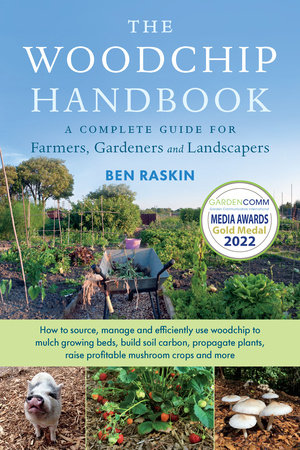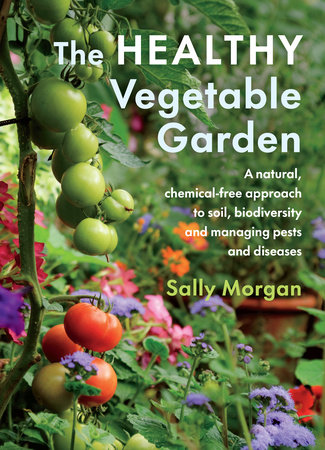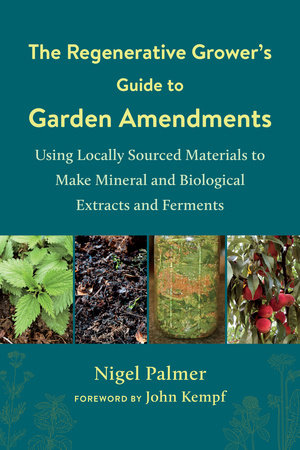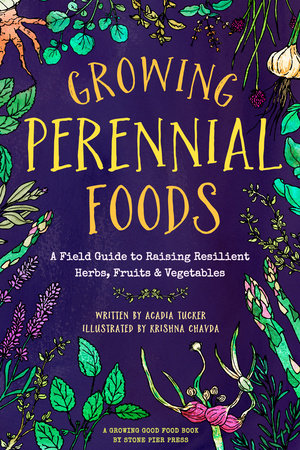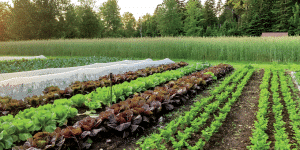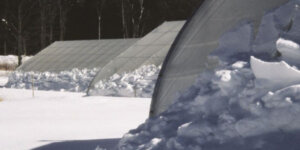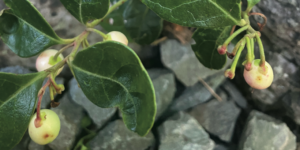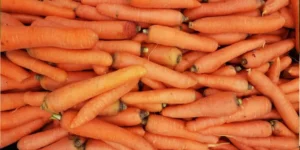Potted Plants Need Woodchip Too!
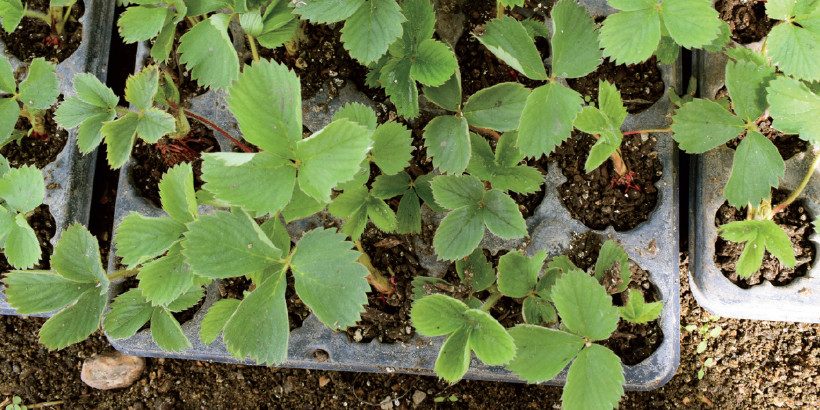
Are you growing the majority of your plants out of pots? We have good news! You, too, can use woodchip! Using woodchip in your potted plants is a great way to reduce weeds without spending time hand weeding.
The following is an excerpt from The Woodchip Handbook by Ben Raskin. It has been adapted for the web.
Hand weeding pots is one of the major costs in producing nursery stock. If you don’t keep your pots weed-free you increase watering costs and can affect plant growth and health. Even if you are using a sterile substrate like peat, as soon as you stand the plants out there are weed seeds flying around in the air that will land in your pots and quickly take hold if not controlled. There are various ways to reduce weeds without hand weeding.
If you’re not producing organically, herbicides are an option. Usually, pre-emergence herbicides are used, which prevent weed seeds germinating. However, post-emergence options are available as well, though they are more costly to apply. Herbicides are becoming increasingly unpopular with consumers and may influence the biology of the substrate, and therefore the health of the plant.
The other alternative is a physical barrier that blocks light from the weed seeds and prevents germination. There are a range of mulch mats available manufactured from materials such as jute, coir and wool. They do a great job of weed control for plants with a single hard stem, but don’t work so well for herbaceous or soft-stemmed plants. They can also make watering a bit tricky if you don’t have drip irrigation systems as the water can run off the mat rather than being absorbed through. Also, they are not cheap.
Using woodchip to top-mulch pots is an option for growers of all sizes; indeed, many of the largest ornamental nurseries recognise the benefits of this method over chemical control or hand weeding. But it is also ideal for home gardeners.
There are a few things you need to think about, though, before rushing out and smothering all your pots in woodchip. Unlike mulching open soil, where there is a large reserve of soil life and nutrients, in a container (and especially in small pots) it is easier to significantly change the growing environment. You might well be adding 20 percent by volume with your mulching material. If, for instance, this mulch has a very high or low pH, this might affect plant growth. There is also the risk of spillage. Woodchip is a lightweight material that can easily fall out of the pot if it gets knocked or blown over. Birds also like scratching around on the surface of larger pots. Weigh up that extra time spent sweeping up woodchip against time saved in weeding.
The age and the size of the woodchip needs to suit pot size. Applying fresh large chip to small pots is likely to cause nitrogen lock-up and check the plant health. However big containers with mature plants might cope just fine. For smaller pots use smaller chip; if you can use partially composted chip that might also help, though if this composting has happened in the open air there is a risk of bringing in weed seeds. Usually, if there is still a woody structure to the mulch the weeds will struggle to germinate even if there is seed present. Pine bark mulches are one of the more effective ways of controlling weeds in pot-grown plants. This is partly because they contain a range of naturally occurring chemicals that inhibit germination of weed seedlings.
Woodchip can work well for large permanently potted plants. I remember visiting a walled garden that had quite a few big topiary plants in containers. Each year the level of the substrate in the containers would drop by a few centimeters as the plants took nutrients to grow. They initially had topped this up with their homemade compost but found that this disappeared too quickly, so they experimented with a thicker layer of woodchip and found this worked far better. Each year they added the new mulch on top of the half-decayed layer from the previous year. The pots were full of worms and retained moisture better, meaning less watering.
In extreme temperatures, potted plants are at risk. Ice and snow, fierce sun and even strong winds will all put your plants at risk, particularly when the plants are very young. A layer of woodchip on top of the growing medium will help mitigate some of the effects of these weather conditions, protecting the plant from frost or drying out and keeping the actual temperature of the substrate a little higher or lower by sheltering and shading.1
The final advantage to woodchip mulching your pots is aesthetic. Though this may seem a minor concern, as a commercial nursery if your plants look great when set off by a lovely even dark bark mulch, you are likely to sell more. If they also stay weed-free for longer at point of sale, your return and wastage costs will almost certainly be lower.
Notes
- S.J. van Donk et al., ‘Wood Chip Mulch Thickness Effects on Soil Water, Soil Temperature, Weed Growth and Landscape Plant Growth’, Journal of Applied Horticulture 13, no. 2 (2011): 91–95, https://doi.org/10.37855/jah.2011.v13i02.22.
Recommended Reads
Recent Articles
No heated greenhouse? No problem! Discover the secrets to thriving winter gardening without breaking the bank.
Read MoreWintergreen is the stunning evergreen groundcover that’s a game-changer for your garden! It’s cherished for its aromatic leaves, vibrant fall color & bright berries.
Read MoreGrow winter carrots for a sweeter & more flavorful harvest! Ditch the bland, store-bought carrots this winter! Grow your own winter carrots for a sweeter and more flavorful twist 🥕🥕
Read MoreWinter is coming… but that doesn’t mean you should put away those tools just yet. Extend the growing season well past the first frost!
Read More

